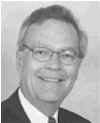|

|
Finding
One’s Way:
Signs
of Virginia
Richmond’s
Jimmy Barrett must be pleased. The WRVA radio show
host launched an on-air campaign last year to update
the “Welcome to Virginia” signs at the
commonwealth’s borders. The old sign “looks like
something my grandmother knitted in 1954,” Barrett
quipped in The Washington Post last fall.
(“Virginia Welcomes You to Choose an Updated
Look,” November 24, 2005).
Thanks in
part to Barrett’s efforts, the Virginia Department of Transportation actually agreed to
replace the 90 signs that welcome visitors as they
cross our borders. Agency officials cited the
upcoming Jamestown anniversary celebration,
complaints about the 50-year-old design, and the age
of the some of the markers as justification. Most
are more than 14 years old and lose their ability to
reflect at night or in bad weather, VDOT officials
said.
To choose the final design, VDOT
asked the public to express their opinions on six
versions last year. More than 56,400 votes were cast
from November 22 to December 4. Officials announced
the winner in mid-December and the first of
Virginia's new welcome signs will be in place next
month for the spring influx of visitors at the start
of Historic Garden Week on April 22.
Whatever their message, road signs have a long
history. The ancient Romans erected stone columns in
the far-flung corners of the empire marking the
distance to the capital city. But it was the
automobile that made road signs a necessity. In
1908, an International Road Congress in Italy
established the first basic patterns. In the U.S.,
road sign standards are regulated by the Federal
Highway Administration’s Manual on Uniform Traffic
Control Devices. States often use the federal manual
as a template for their own sign designs.
Sign standards are so uniform that anyone who has
taken the Virginia driver’s test must learn the
basics: sign shapes for example. Many people,
however, don’t know how much information can be
garnered from signs. For example, there is logic to
the interstate highways numbering system.
Even-numbered one- and two-digit interstates, such
as I-64 and I-66, always run east and west. The
smaller the number the farther south it is.
Odd-numbered interstates, such as I-95, I-81 or
I-77, run north and south. The larger the number the
farther east it is.
The three-digit
interstates are always connectors. If the first
number is even, i.e. I- 495, the road is often a
circular loop that connects to an interstate at both
ends. If the first number is odd, such as I-195 near
Richmond, it only connects at one end and the other
end goes to the center of a city (U.S. Highways:
From US 1 to US 830: Numbering Conventions for
United States Numbered Highways.
Logic
applies even to the small green mile markers along
interstates. The signs always start their count at
the western border of a state for east-west
interstates and at the southern border for
north-south thoroughfares. For example, if you are
traveling I-95, the lower numbers are near Richmond,
the higher numbers near Fredericksburg and Northern
Virginia, no matter which direction you are
heading.
Even the blue service signs
with logos of nearby businesses tell travelers a
lot. To be listed on the sign, the business must be
one of six closest to the interstate exit.
Businesses, except for campgrounds, should be within
three miles of the exit and all must have restrooms
and a public phone. They must be opened a certain
number of days per week for a certain number of
hours depending on type of service VDOT's Travel
Service Program. Of course, businesses pay for the
privilege of such recognition.
Whether,
they are cautioning, directing or advertising
services, it’s a rough life for Virginia’s road
signs. Many are damaged or go missing each year.
VDOT’s three regional sign shops annually send out
100,000 new or replacement signs to the various VDOT
districts that stretch from Northern Virginia to
Hampton Roads, Salem and Bristol.
Which
marker is replaced most? It’s the ubiquitous
stop sign. These seem to be always be located where
accidents occur and suffer the consequences. Also,
stop signs seem to be popular trophies near college
campuses, but other markers are also coveted. The
sign for Cuckoo, Virginia, in Louisa County gets
stolen about a dozen times a year, according to one
sign shop employee (“Sign, Sign, Everywhere a
Sign,” Potomac News, February 5, 2005).
Occasionally, VDOT and other local sign shops get
requests for unique markers. Back in 1998, Roswitha
Augusta asked Dulles Greenway officials to post
signs warning drivers to watch for turtles. She
tried to save one on the 14-mile stretch between
Leesburg and Dulles International Airport, but it
was crushed before she could rescue it. Augusta paid
$3,000 for four signs that showed a turtle with
beaded brow and the words, “Give Them a Brake.”
(“Signs Ask Drivers’ Help to Let Turtles Cross
Road,” The Washington Post, September 27,
1998).
We hope local reptiles are
relieved.
NEXT:
Happy Trails to You: Virginia’s Unbeaten
Paths
–
March 20, 2006
|
|
